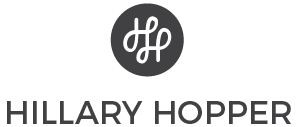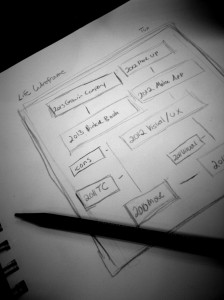Yesterday I found out that someone was using my name, to have traffic flow to their website (www.hillaryhooper.co.uk). This young man was posing as a female designer and miss spelling one letter in my name to attract traffic from Google and to attain my clients. He was basically looking to do work under my name, take a security deposit then flee. He also started a “HillaryHooper” twitter account that same day he put up the site (Last Week). He followed a few well known designers along with Forrst and a few other design companies.
After a lot of investigation, the person turned out to be a 19 year old Male from the UK. Not only was he using my name for traffic and clients, he is also doing it with several other companies, for Design and also SEO work. It’s been an eye opening weekend of seeing how someone can take your name, reputation and work and claim it as their own. The guy realized he had been found out, and that I contained proof of several screenshots of evidence pointing to him purchasing hillaryhooper.co.uk along with other strange company names. You can believe this made him quite nervous and I got an email from him today. I have to say it was really disappointing to see someone so desperate to lie to my face. Act like I wasn’t smart and couldn’t see the truth. I am not disclosing his name because I do not want to give him any power or glory in this post. The logistics have been resolved and the site and twitter name were taken down earlier this morning. Thankfully, I still have proof of his behavior via screenshots if I ever get contacted by him again. Thank you to the design community for reporting him as well, along with re-tweeting the situation.
What I really want to tell you, is how to protect yourself from letting this happen to you.
Your work is out on the web naked, for everyone to see. Your name can’t be copy righted or trade marked. You have to protect your identity. There are thousands of people getting screwed over by Black Hat Identity Fraud. Here’s what you can do to prevent it:
Try this flow every 1-2 months. This is a vital house cleaning procedure that you need to do if you have a presence online:
1. Google your name and view every link with your name with it. Go back as far as you can go into the search till things don’t seem to make sense anymore and your name is not relavent in the search.
2. Spell your name wrong in a Google search. Spell your name with an extra letter or change the spelling of one of the letters in your last name. You may need to get creative in the process (Mine was just spelled wrong by an extra “O” at the last name).
3. If you find someone who is using your name for traffic and work, contact them directly. Request to have their domain name and take screen shots of their behavior. Find out where they work and if needed write their company. You can also report Black Hat Identity Fraud to the FBI and Police. You’re probably not the first person they have done this too, so don’t feel bad.
4. Get the design community behind you. It’s good to have friends, people will stand up behind you to back you up.
5. Get it straightened out and move on. Don’t give the person any more power than they deserve. Which is none.
I hope this post has opened your eyes to protect your name and identity online and to also monitor it. If you ever have any issues with a case like mine or one similar, please don’t hesitate to email me.
Special thanks to: Craig Reville, for helping out with the screen shots and investigation | Kyee, for spotting the guy in the first place.

